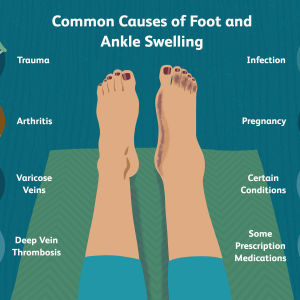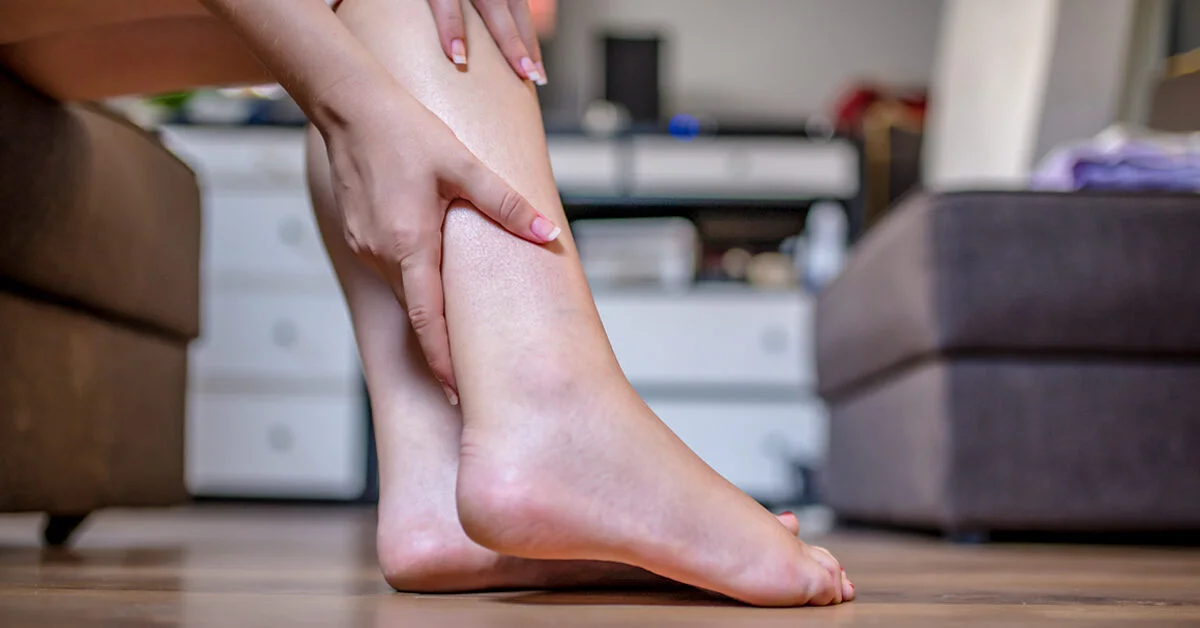Understanding Ankle Swelling
Ankle swelling, or peripheral edema, occurs when fluid builds up around the ankle joint. It’s a common issue and understanding what causes it is important for managing and preventing it.
Causes of Ankle Swelling
Several things can cause ankle swelling:
1. Injury:
Ankle sprains, fractures, or other injuries can cause swelling due to tissue damage and inflammation.
2. Prolonged Sitting or Standing:
Staying in one position for too long, like sitting or standing, can lead to fluid retention and swelling.
3. Pregnancy:
Hormonal changes and increased pressure on the veins during pregnancy can cause fluid to accumulate in the ankles.
4. Venous Insufficiency:
This happens when veins in the legs struggle to return blood to the heart, resulting in swelling, especially around the ankles.
5. Lymphedema:
When the lymphatic system is damaged or blocked, lymph fluid can build up, causing persistent swelling, including in the ankles.
6. Medications:
Certain drugs, like calcium channel blockers or NSAIDs, may lead to fluid retention and swelling as a side effect. Explore More About ( Manage Blood Pressure with Exercise)

Identifying Triggers of Ankle Swelling
Recognizing what makes swelling worse can help manage it better:
1. High Sodium Intake:
Eating too much sodium can lead to water retention and increase the risk of swelling.
2. Excessive Heat:
Hot weather or being in heat for too long can dilate blood vessels and cause fluid retention, making swelling worse.
3. Poor Leg Positioning:
Crossing legs or sitting with legs dangling can restrict blood flow and worsen swelling.
4. Lack of Physical Activity:
Not moving enough can impair circulation and fluid drainage, contributing to swelling.
5. Tight Clothing:
Wearing tight clothes, especially around the waist or ankles, can restrict blood flow and make swelling worse.
Managing and Preventing Ankle Swelling
Here’s how to deal with swelling:
1. Elevate the Legs:
Raising your legs above heart level several times a day can help fluid drain and reduce swelling.
2. Compression Therapy:
Using compression stockings or wraps can improve blood flow and prevent fluid buildup in the ankles.
3. Maintain a Healthy Weight:
Being overweight can strain the body and worsen swelling, so aim for a healthy weight through diet and exercise.
4. Stay Hydrated:
Drinking enough water is essential to maintain fluid balance and prevent dehydration, which can worsen swelling.
5. Avoid Prolonged Immobility:
Moving around regularly can prevent blood from pooling in the legs and reduce the risk of swelling.
6. Follow Medical Advice:
If swelling persists or is accompanied by other symptoms, it’s important to see a doctor for proper evaluation and treatment.

| Causes of Ankle Swelling | Identifying Triggers of Ankle Swelling | Managing and Preventing Ankle Swelling |
|---|---|---|
| Injury | High Sodium Intake | Elevate the Legs |
| Prolonged Sitting or Standing | Excessive Heat | Compression Therapy |
| Pregnancy | Poor Leg Positioning | Maintain a Healthy Weight |
| Venous Insufficiency | Lack of Physical Activity | Stay Hydrated |
| Lymphedema | Tight Clothing | Avoid Prolonged Immobility |
| Medications | Follow Medical Advice |




